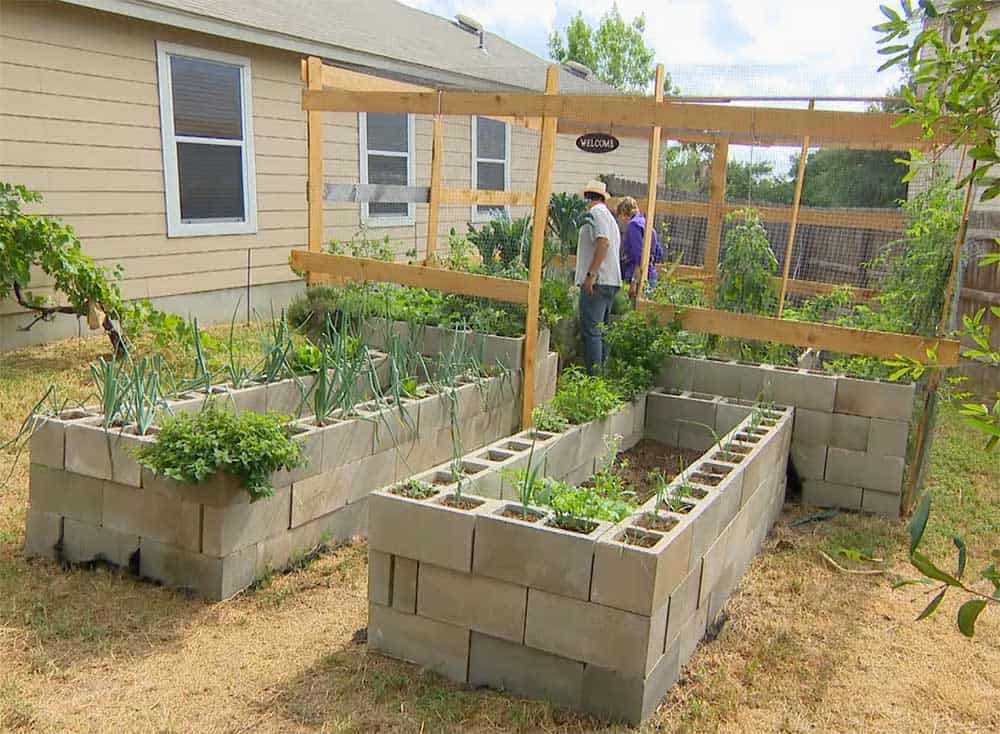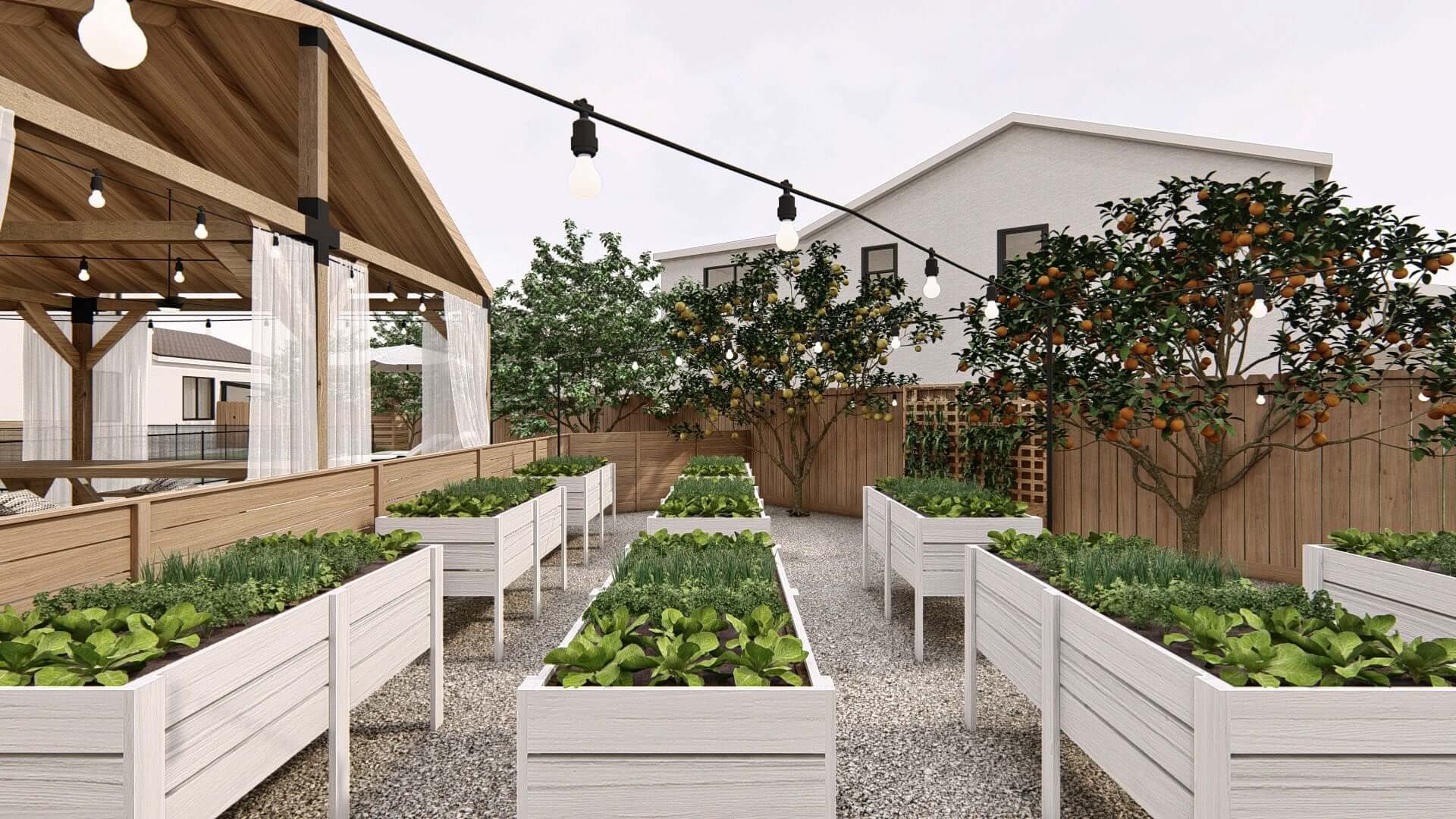Build A Raised Garden Bed With Cinder Blocks In A Weekend
Build a Raised Garden Bed with Cinder Blocks in a Weekend
Introduction
Raised garden beds are a great way to improve your gardening experience. They can help you grow healthier plants, extend your growing season, and make gardening easier on your back. Cinder blocks are a popular material for building raised garden beds because they are strong, inexpensive, and easy to work with.
In this blog post, I will show you how to build a raised garden bed with cinder blocks in a weekend. I will provide step-by-step instructions, as well as tips and advice to help you get the best results.
Materials and Tools
The following materials and tools are needed to build a raised garden bed with cinder blocks:
- Cinder blocks
- Mortar (optional)
- Level
- Tape measure
- Rubber mallet
- Spade
- Soil
- Mulch
Instructions
- Choose a location for your raised garden bed. It should be in a sunny spot with good drainage.
- Measure the dimensions of your desired raised garden bed.
- Lay out the cinder blocks in your desired pattern.
- If you are using mortar, apply a thin layer of mortar to the bottom of each block.
- Stack the cinder blocks on top of each other, making sure they are level.
- Fill the raised garden bed with soil.
- Add mulch to the top of the soil.
Tips and Advice
- When choosing a location for your raised garden bed, make sure it is at least 6 hours of sunlight per day.
- If you are using mortar, be sure to use a type of mortar that is designed for outdoor use.
- When stacking the cinder blocks, make sure they are level. This will help to prevent the raised garden bed from tipping over.
- Fill the raised garden bed with a high-quality potting soil that is designed for vegetables.
- Add a layer of mulch to the top of the soil. This will help to retain moisture and suppress weeds.
Conclusion
Building a raised garden bed with cinder blocks is a relatively easy project that can be completed in a weekend. With a little planning and effort, you can have a beautiful and productive raised garden bed in no time.
Here are some additional tips to help you get the most out of your cinder block raised garden bed:
- Choose the right size for your raised garden bed. If you are only planning on growing a few plants, a small raised bed will suffice. However, if you want to grow a larger variety of plants, you will need a larger raised bed.
- Consider the shape of your raised garden bed. A rectangular raised bed is the most common shape, but you can also choose to build a square, triangular, or circular raised bed.
- Add drainage to your raised garden bed. This will help to prevent the roots of your plants from rotting. You can add drainage by adding a layer of gravel or pebbles to the bottom of the raised bed.
- Use a high-quality potting soil. This will help to ensure that your plants have the nutrients they need to thrive.
- Mulch your raised garden bed. This will help to retain moisture and suppress weeds.
- Water your raised garden bed regularly. This is especially important during hot, dry weather.
- Fertilize your raised garden bed regularly. This will help to keep your plants healthy and productive.
With a little care and attention, your cinder block raised garden bed will provide you with years of enjoyment.
If you're looking for a way to improve your garden's productivity and appearance, consider building a block garden bed. These beds are raised above the ground, which makes them easier to weed and maintain. They also provide better drainage and aeration, which can help your plants grow healthier and stronger.
There are many different ways to build a block garden bed. You can use bricks, stones, concrete blocks, or even wood. The size and shape of your bed will depend on your space and needs.
Once you've built your bed, you'll need to fill it with good quality soil. You can add compost or other organic matter to the soil to improve its drainage and fertility.
Block garden beds are a great way to add beauty and functionality to your garden. They're also a relatively easy project that you can do yourself.
For more information about block garden beds, I recommend visiting Garden Wiki. This website has a wealth of information on how to build and maintain these beds.
FAQ of block garden bed
1. What are the benefits of using a block garden bed?
Block garden beds offer a number of benefits over traditional in-ground gardens. They are:
- Easier to weed and harvest.
- More accessible for people with limited mobility.
- Better drainage, which can help to prevent root rot and other plant diseases.
- Warmer soil, which can help plants to grow earlier in the spring and later in the fall.
- Less susceptible to pests and diseases.
2. What materials can I use to build a block garden bed?
There are a variety of materials that you can use to build a block garden bed, including:
- Bricks
- Concrete blocks
- Natural stone
- Wood
- Composite materials
The best material for your garden bed will depend on your budget, the climate in your area, and your personal preferences.
3. How big should a block garden bed be?
The size of your block garden bed will depend on the amount of space you have available and the types of plants you want to grow. A good rule of thumb is to make each bed at least 4 feet wide and 6 feet long.
4. How do I fill a block garden bed?
The best way to fill a block garden bed is to use a mixture of topsoil and compost. This will provide your plants with the nutrients they need to thrive. You can also add some sand to the mix to improve drainage.
5. How do I care for a block garden bed?
Block garden beds require regular watering, weeding, and fertilizing. You should also mulch the bed to help retain moisture and suppress weeds.
Image of block garden bed
- Image 1: A raised garden bed made with cinder blocks. The bed is filled with soil and planted with vegetables.

- Image 2: A square raised garden bed made with concrete blocks. The bed is lined with landscape fabric and filled with soil.
- Image 3: A long, narrow raised garden bed made with retaining wall blocks. The bed is filled with soil and planted with herbs.

- Image 4: A raised garden bed made with stacked stone blocks. The bed is filled with soil and planted with flowers.

- Image 5: A raised garden bed made with recycled bricks. The bed is filled with soil and planted with vegetables.

Post a Comment for "Build A Raised Garden Bed With Cinder Blocks In A Weekend"